The one human skill that powers all others: Is empathy the secret to wellbeing, inclusion & the future of work?

Written by Ed Kirwan
Ed Kirwan is the Founder and CEO of Empathy Studios, an organisation using film to develop empathy, a vital human skill. A former science teacher and Head of Chemistry, Ed transitioned into filmmaking in 2018, launching The Empathy Programme in 2020. Ed also founded Empathy Week, the world’s largest empathy festival, reaching over 1.3 million students in 50 countries.
As an educator, you’re often faced with student situations you can’t anticipate. Those situations are almost always personal, nuanced and highly-specific to that individual. They require a human response. They require empathy.
Empathy is the skill to understand another and the ability to create space for someone to reveal their authentic self, whilst reserving judgement.
Empathy is no longer merely a nice-to-have; it’s essential and has been listed as one of the most vital skills for the 21st century. Is vital for conflict resolution, it helps increase creativity) and can even reduce cyberbullying. Empathy can be passed from generation to generation View here and so teaching it has far-reaching benefits beyond the immediate impact.
Neighbourhood diversity has doubled on average in the UK since 2001 and, in some towns, it has increased ten fold. This should be a wonderful opportunity of celebration and learning, yet we know from the UK riots this summer that cohesion and community isn’t a given. It also doesn’t come about from simply teaching students to ‘be kind’ and ‘be tolerant’. Empathy sits at the foundation of the human skills that enable inclusion, communication and adaptability that are crucial in our globalised world.
Since 2020, my team and I have been helping educators give their students the tools needed to develop empathy – and we continuously research the impact, in partnership with Cambridge University . In these last five years we’ve learnt a lot. Our Empathy Programme has engaged 175,000 students and our annual festival, Empathy Week, has reached over 1.3 million students in 50+ countries. But for me, it all started in the classroom.
At the age of 22, I began teaching science in North London at a co-ed state school – something I deeply loved. It taught me a lot about privilege, society and the importance of empathy. It also taught me that humans are complex social and emotional beings.
Much of my motivation comes from having taught the infamous (self-named) “U-gang” – a group of 24 boys who all received ‘U’ grades in their christmas mock exams.
They had a lot of anger and lacked motivation. In their eyes, they were already destined to be a failure. They hadn’t yet learnt how to communicate their needs effectively, or they were misunderstood – in all honesty I think it was both things at once. As I got to know them I realised they were, quite simply, scared young men.
Teaching that group was one of the most rewarding experiences in my teaching career. None of the “U-gang” ended up with a U grade, despite one of my students missing his Chemistry exam because he was in a police cell. They all passed.
Looking back now it’s not because I was the best science teacher, but because I took a genuine interest in them as individuals. Who did they live with at home? What hobbies did they have? What did they aspire to be? What made them tick?
I took as many steps as possible to understand and develop a healthy rapport with the class, including delivering science classes on the basketball court and shifting our practical lessons to be less daunting. I was using empathy, I just didn’t have language for what I was doing yet.
Empathy underpins everything needed to make a child feel seen, heard and understood. Everything that’s needed to make someone feel safe and like they belong and that’s what we’re all really after isn’t it? To belong?
Empathy is not a value or a trait. It is a skill which can be actioned and, crucially, taught. Our pilot research with Cambridge University explores the impact of our term long programme to develop empathy skills in 5-18 year olds. Teachers report a measurable impact to empathy levels – and excitingly they also report improvements to behaviour and increased global citizenship after completing the programme.
Crucially there are three drivers of success that manage to build empathy successfully:
1) Engage and entertain students – A lot of education content can be boring and only serves to transfer information rather than ignite genuine conversation and learning. Our programme and films are a trojan horse for empathy building. They excite students from the very start and in turn lead to conversations and connection.
2) Increase the amount & diversity of experiences of students – We can’t all fly around the world, but we can allow students to experience real life stories through film. From Lipa who talks about the right to wear a Hijab in sport to a Mexican paralympian who is now giving back,, students can gain insight into themes such as culture & identity, disability, bereavement, sustainability & mental health.
3) Skills building can’t be a one-off – Empathy is a muscle and the best results come with sustained and long-term intervention. It’s the schools that build empathy into a golden thread of their school that are seeing the benefits.
As educators and teachers, we need more support to help equip young people with the human skills they need. As the world becomes ever more connected and AI transforms the way we live and work together, it is our human relationships, adaptability and resilience that will allow us to thrive – and empathy is the one human skill at the foundation of this.
The Battle for Inclusive Education: A Glimpse at the Frontlines
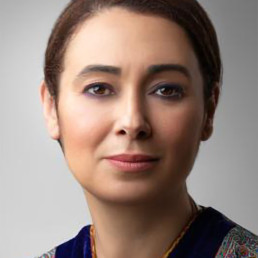
Written by Rachida Dahman
Rachida Dahman is an international educator, a language and literature teacher, and an educational innovator. She started her career in Germany as a teacher trainer advocating the importance of relationships above academics. She then moved to Luxembourg where she teaches German language and literature classes to middle and high school students. She is an award-winning poet, co-author of the best-selling book, ATLAS DER ENTSCHEIDER Entscheiden wie die Profis- Dynamik, Komplexität und Stress meistern.
“It is important to me to consciously assimilate insights into developments, causes, and effects of working with children and families and to engage in dialogue with other stakeholders”. Rachida Dahman
The question of inclusive education for all remains a central theme that presents us with challenges while simultaneously offering opportunities for change and progress. Amidst this multifaceted scenario, we witness an unprecedented battle on all fronts. From the classrooms to the corridors of power, there is a struggle to shape the educational landscape and pave the way for a fairer future.
A Reordering of the Education System
The good news first: schools do not have to remain in permanent crisis. Despite limited resources and the need to address the needs of children and families with special requirements, there is a growing demand for a fundamental restructuring of the education system. This restructuring transcends mere resource reallocation; it demands the deconstruction of antiquated paradigms and the reconstruction of an educational system that fundamentally empowers students to question prevailing norms, resist conformity, and actively redefine the contours of their world. From parents to teachers to students, there is a push towards developing individuals who can make decisions with integrity and zest for life.
Key Factors in Transformation
School infrastructure: The modernization of teaching and learning materials, along with the integration of innovative technologies, is crucial and must be driven by a fundamental rethinking of what education should achieve. Additionally, forming smaller classes is necessary —not merely as a logistical improvement but as a means to foster genuine dialogue between students and teachers, allowing for personalized learning that respects and celebrates diverse linguistic and cultural backgrounds. This approach may also serves as a countermeasure to the homogenizing effect of standardized tests, which too often serve to enforce conformity rather than inspire excellence.
Conditions of School Buildings
A thorough analysis of school buildings is essential not just to meet the high standards of safety, accessibility, and educational quality, but to reimagine these spaces as the physical embodiment of our educational ideals. Renovating and modernizing existing infrastructure is imperative, yet it must go beyond mere compliance with regulations. We need to envision schools as dynamic environments that inspire learning, creativity, and a sense of community. This requires an architectural revolution, one that not only considers the physical space but also how that space interacts with the psychological and emotional wellbeing of students and educators alike. By crafting buildings that are not just functional but transformational, we pave the way for an education system that nurtures the full potential of every individual.
Environmental Awareness
Integrating environmental topics into the curriculum and implementing measures for energy efficiency plays a central role. Heightened environmental consciousness contributes to reducing the ecological footprint of schools. Integrating environmental topics into the curriculum is more than teaching students to recycle or save energy. It is about fostering a profound connection to the planet they inhabit. The measures for energy efficiency must be implemented with an urgency that reflects the precariousness of our environmental situation, making schools not just places of learning, but sanctuaries of sustainability. This heightened environmental consciousness is not merely a contribution to reducing the ecological footprint of schools; it is an act of rethinking how we coexist with the natural world. By embedding this awareness into the very fabric of education, we are nurturing a generation that understands stewardship as an essential part of their identity, a generation that sees the care for the Earth as inseparable from the care for their community and their future.
Ensuring Accessibility
All students must be able to participate in the educational process, regardless of their backgrounds or circumstances. This imperative extends particularly to children and families traumatized by the ravages of war, who not only face the direct impacts of conflict but also endure the humiliation it inflicts. Such individuals require special attention and support to overcome the challenges they face in accessing education. This necessitates not only structural measures but also the provision of dedicated resources and tailored interventions to address their unique needs. For it is within the sanctuaries of our schools that we must mend the shattered spirits of those broken by conflict, transforming these halls into spaces where dignity is restored, dreams are rekindled, and the seeds of a just and peaceful future are sown. Only by ensuring inclusivity and support for the most vulnerable members of our communities can we truly uphold the principles of equitable education for all.
Career-Oriented Programs
A better connection between school and the professional world facilitates the transition into the workforce and provides practical insights. In this context, education must do more than just prepare students for the workforce – it should also embody egalitarian values and act as a powerful equalizer. To achieve this, such programs need to be developed with meticulous care. By embedding inclusivity and gender equality at their core, these programs ensure that every student, regardless of background, has the opportunity to pursue careers in fields traditionally dominated by men. Thoughtfully bridging the gap between school and the professional world, these initiatives foster a strong sense of purpose and social responsibility in students, motivating them to use their skills to drive meaningful, positive change.
Advancing Digitalization
The utilization of digital technologies offers opportunities for an enhanced learning environment but also necessitates training for teachers and the promotion of digital literacy. Advancing digitalization presents an exciting frontier for transforming our learning environments, offering unprecedented opportunities for innovation and engagement. However, it is crucial to recognize that harnessing these digital technologies demands more than just integration; it requires a fundamental shift in how we approach education. Teachers must be equipped not only with the technical skills to navigate new tools but also with the pedagogical strategies to effectively incorporate them into their teaching. Furthermore, promoting digital literacy among students is not merely about using technology but about fostering critical thinking and ethical awareness in an increasingly digital world.
Community Engagement
Local communities play a crucial role in promoting education. Collaborating with local organizations and businesses opens various avenues of support. They are pivotal in advancing education, offering far more than just supplementary support. Collaborating with local organizations and businesses transforms these entities into active partners in the educational process. This partnership is about forging meaningful connections that invigorate and expand the learning experience. By leveraging community assets— from mentorship programs and real-world internships to innovative local projects—education becomes a shared endeavor that reflects and responds to the needs and aspirations of the community. It fosters a culture where education is not just a responsibility of the institutions but a collective mission, driving social change and collective growth.
A Call to Action for Decision-Makers
The transformation of the education system requires a long-term strategy and committed collaboration from all stakeholders. Particularly at the institutional level, a shift in mindset and active communication are essential. Only when all actors understand their roles fully and work together constructively can we achieve inclusive education for all. Decision-makers must urgently champion a shift in mindset and prioritize transparent, heartfelt communication at every level of the institution. This is a passionate call for decisive leadership and unwavering unity. It takes every stakeholder to fully grasp their vital role and work together with genuine commitment to break down barriers and create a path to truly inclusive education.
Building Productive Relationships in Education
In the midst of pervasive and pressing challenges, the importance of fostering harmonious and fruitful relationships cannot be overstated. It is crucial to establish and sustain these relationships over the long term, working collaboratively with schools, teachers, and families to anchor and stabilize structures that provide environments where children can thrive and develop undisturbed. The integrity of educational structures hinges on solid relationships, which provide a foundation of support and stability for students. By fostering open communication and mutual respect among all stakeholders, we build a framework that supports not only academic success but also holistic development.
Securing the Involvement of all Stakeholders
It is essential, in my opinion, to ensure the engagement of all relevant stakeholders to create such an environment for children. In times of ubiquitous and pressing burdens, it is crucial to establish and maintain productive relationships for the long term, to collaborate with existing schools, teachers and families to anchor and stabilize structures so that children can find environments in which they can fully unfold, undisturbed.
Unfortunately, in my experience, schools often do not thoroughly evaluate their internal weaknesses. Instead, these issues are frequently ignored or passed off as someone else’s problem, which prevents meaningful resolution. Addressing these weaknesses honestly is crucial for understanding and resolving conflicts effectively.
The Importance of Dialogue and Collaboration
It is important to me to consciously assimilate insights into developments, causes, and effects of working with children and families and to engage in dialogue with other stakeholders. In my view, building bridges between various stakeholders—parents, educators, policymakers, and community leaders—is essential for creating an inclusive educational environment. By fostering open dialogue and collaboration, we can address the diverse needs of students and families, thereby promoting a more equitable and supportive educational system.
To truly advance the cause of inclusive education, it is imperative to deeply engage with and integrate insights into the evolving dynamics of working with children and families. This means actively seeking out and understanding the root causes and far- reaching effects of our educational practices. Engaging in meaningful dialogue with all relevant stakeholders—parents, educators, policymakers, and community leaders is fundamental. Building robust connections between these diverse groups remains a necessity for crafting an educational environment that genuinely supports and includes every student. Such collaboration requires a profound commitment to open, honest, and strategic dialogue. Through this collaborative effort, we can address the varied and complex needs of students and families, creating a more equitable and nurturing educational framework. Our collective aim must be to forge these critical alliances, leveraging our shared insights and experiences to dismantle barriers and drive systemic change. By uniting our efforts, we pave the way for an educational system that not only acknowledges but embraces diversity, ensuring that every child receives the support they need to thrive. This is not just a vision but a necessary evolution towards a truly inclusive future.
Conclusion
The battle for inclusive education is a complex endeavor that encompasses many fronts. Yet, despite the challenges, there is hope. By working together on solutions and embracing the diversity of our society as an opportunity, we can create an educational landscape that is accessible and fair for all. It is clear that no single entity can address the challenges alone. It requires a concerted effort from all stakeholders to create environments where every child has the opportunity to thrive. By recognizing the importance of productive relationships, engaging in meaningful dialogue, and working collaboratively, we can pave the way for a brighter future in education—one that is inclusive, supportive, and responsive to the needs of all learners.
Are the Right People Sitting at the Table?
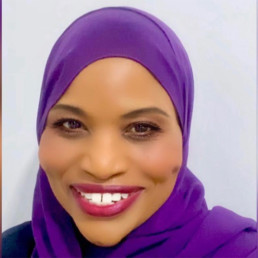
Written by Dr Fatima Bailey
Dr. Fatima Bailey is the Chair of the Department of Teacher Education and Teacher Leadership at the Sharjah Education Academy, in the UAE. Dr. Bailey worked in Pre-K-12 education as a director, school principal, vice principal and teacher in the UAE and US. Dr. Bailey also serves as a mentor in the Ta’Alouf Program for Career Based Teacher Development at the Al Jalila Foundation. Prior to her tenure at SEA, Dr. Bailey served as an advisor on high-level UAE national initiatives and projects. An avid researcher, Dr. Bailey is also the recipient of the prestigious Gordon Allport Prize Award for Outstanding Papers.
Originally published on the Sharjah Education Academy (SEA) website on 30/12/23: https://sea.ac.ae/are-the-right-people-sitting-at-the-table/
Authentic and Sustainable Leadership for Leading and Improving 21st Century Schools
The UAE has designated 2023 as “the year of sustainability” (1). The country continues to take leaps and bounds, inventing and forging new pathways of sustainable practices across all sectors, including education. Towards this end, a specific type of viable leadership is required for creativity and longevity in schools.
Sustainable and authentic leadership is one possibility. School leaders are entrusted to make changes and reform happen at their schools. Many are moving away from making pledges and commitments to creating meaningful and long-lasting change through sustainable strategies and authentic practices. The need to continuously improve schools has made it increasingly clear that it is time to accelerate our thinking, innovate new approaches, and adapt our actions. Through revolving conversations, we see school leaders collaborate, meet, and sit with members of their learning community to create pathways forward.
Welcome to the Table
School leaders are entrusted to create change, implement those changes, and find ways to maintain longevity. Sustainable and authentic leadership are two buzzwords I’ve heard come up at meetings, symposiums, and in research literature around current trends. Being invited to a meeting and sitting at “the table” is an opportunity to share and exchange ideas and build collective intelligence around paramount issues. It provides a platform to be heard and to listen.
Those invited to school leadership meetings typically use a level of influence. They leverage their credibility and expertise to make decisions, drive initiatives forward, initiate policies, and create change. School leaders come to the table often, at different intervals, and for different and distinct reasons. They must carefully think about who they invite to the table to help build collective intelligence, address complex problems, and arrive at solutions that will not only work short-term but long-term as well. The needs of schooling today are dynamic and complicated.
The Survey Says
Upon reflecting on conversations and dialogues I had with school leaders about the challenges they face to create meaningful reform and lasting change in schools, I was inspired to read about nuances and trends in leadership. Interestingly, I found one blog by the Center for Creative Leadership (2023) with a survey and poll. The question was about the most powerful communication skills that today’s leaders should demonstrate. When I first looked at the poll question, I thought, “Oh, this is easy.” In my opinion, I felt the number one and most powerful skill needed is “trust” or to be “trustworthy”. However, trust was not one of the four options.
I completed the poll using the possible answer choices provided. Poll respondents were given four choices: 1) authenticity, 2) setting clear expectations, 3) encouraging input, and 4) simplifying and being direct. I reflected on my reading and experience. Later, I returned to view the results of the poll. I was intrigued by all the responses. The response that was generated by over 55% was “setting clear expectations”. I disagreed and wondered why this response generated such a high percentage.
Making the Case
In my view, trust should have been one of the options and responses. But it was not, and I wondered why. Back to “sitting at that table” and why I thought that trust is so important. More questions came to my mind. What does it mean to be trusted? Why is that important? How does trust evolve? Can leaders do their best work if they are not trusted to do so or if they are unable to trust others in their team? Does the trait and characteristic of being trustworthy lead one to being authentic? How can one do this with longevity?
Leading Authentically
I then had an “aha” moment about the type of leader who is authentically trustworthy and how this can position one’s leadership. “Authenticity” is about consistently being true to yourself and your values and not pretending to be someone you’re not. School leaders should demonstrate authenticity. When they are genuine, consistent, and authentic, those who depend on them can sense it, see it, and are more likely to trust them because they feel their school leaders are not hiding anything or trying to hurt or manipulate them. Teachers, parents, and students might feel rest assured by school leaders who demonstrate “how they are truly, genuinely and intentionally committed” to caring about learners in schools and improving the learning journey for children.
Leading Sustainably
School leaders are responsible for changing lives by changing education. They should lead in authentic ways that can be sustained. Sustainable leadership is about leading others toward consistent, actionable, impactful, and long-lasting change. Sustainable leaders focus on making decisions that are rooted in strong moral and ethical principles and values and are committed to ensuring social responsibility. (2) They are mindful of how they interact with others, present their ideas, and share their thought processes through open dialogue with others. They galvanize and mobilize efforts for school improvement. They reset standards and reshape the tone. Schools today require principals, vice principals, middle leaders, teachers, parents, and students to be sustainable leaders, all serving vital roles in helping schools continue onward and upward. (3)
Take The Leadership Challenge: Tomorrow Starts Today
I encourage school leaders to think about what this means to them and how they might incorporate authentic and sustainable leadership in their work to help their learning community thrive. Are you ready to take on a new leadership challenge?
I invite you too! If asked to “sit at the table” and join a meeting to share your insights, expertise and/or experiences …consider whether you are the right person and ask yourself how you will do so. Because how you decide to “sit at the table” … will speak volumes about your leadership. It might shape decisions, actions, and future outcomes. The way you choose to “sit at the table” today might impact who “sits at the table” tomorrow. Happy sitting!
Citations and Footnotes
(1) Year of Sustainability. https://uaeyearof.ae/ accessed on November 15, 2023
(2) Liao Y. (2022). Sustainable leadership: A literature review and prospects for future research. Frontiers in psychology, 13, 1045570. https://doi.org/10.3389/fpsyg.2022.1045570
(3) Özkan, P. (2022). School Principal as An Environmentally Sustainable Leader, Journal of Educational Leadership and Policy Studies, 6(1)
Talking Race and Racism with Children - when do we start?
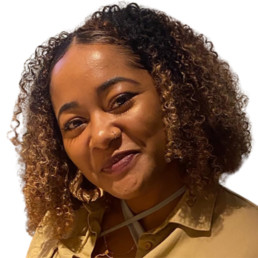
Written by Omena Osivwemu
Former Primary Teacher, Humanities Lead, Researcher. Author of 'Decolonising the Curriculum: A Comparative Case-Study of Black Learner and Educator Perspectives and Experience in London and Johannesburg' in The BERA Guide to Decolonising the Curriculum.
This question has played on my mind for a while; at a conference of educators reckoning with race, a Black senior leader who is also a parent asked “when is the right time to talk to my children about race?” This stuck with me and the academic on the panel looked to me, as an experienced Primary School teacher to respond.
Given my lived experience growing up Black in Northern England, training and teaching across the North and the Midlands, the answer seemed obvious to me.
In short- right away! As soon as children are absorbing language, learning values and copying behaviours.
As soon as we teach toddlers what is a boy and what is a girl, that is the social construction of gender- even if you opt for a more gender-neutral or fluid approach- that is still teaching them difference. When we teach children to share; be kind; tell the truth etc., all values we deem to be ‘right’, we should also be teaching them that sometimes not everyone will be kind, share or tell the truth. At times this can be due to our differences. But difference is a wonderful, necessary part of life!
Of course, discussions should be age-appropriate in language children understand and use. ‘Sulwe’ by Lupito Nyong’o is a beautiful book, aimed at young children and explores themes of ‘race’ and colourism. Now, there is a wonderful array of diverse books available for all ages! As children get older, we can then build on their racial literacy, empowering them to make some sense of the social construction that is ‘race’. For adults, I would recommend ‘How to raise an anti-racist’ by Ibram X. Kendi as a great place to start.
As soon as we read traditional tales to children, let them watch YouTube, TV or films, we are passing on messages about society, how people interact and what is deemed ‘right’ and ‘wrong’. When children can describe something as red, green, blue, black and white; they can and will use this language to describe differences between people. It may not be ‘accurate’ to the adult lens, for instance as a young child in a Black, mixed family, I would draw my father’s dark brown skin as purple and my mother’s very fair brown skin as pink.
One of my earliest memories as a 4 year old (contextualised by my mother’s memory) at a mostly White Nursery, was feeling different. Too brown, with hair that was too dark and curly, and eyes that were too dark, compared to the teachers, other children and most importantly the blonde, blue-eyed dolls which I adored! Then, when the teachers with good intentions, changed the play to ‘Curlilocks’ so that I could play the character Goldilocks, I knew I wasn’t ‘right’- I didn’t fit. If Black and brown children aren’t too young to experience or witness racialisation or racism, nobody else is too young to learn about ‘race’ and racism.
Later on during undergrad’, volunteering in local primary schools in Northern Lancashire, as soon as I walked into classrooms, children as young as 4 would stare wide-eyed and mutter under their breath “she’s Black!”. Throughout my teaching career across England and Spain, most times I was the only Black teacher children had seen. The responses have varied from positive, such as expressing their love for my curly hair, inquisitive questions and collaborative cultural exchange. To the negative, for example young children avoiding touching my skin when I gave them something, or 6 year olds ignoring me as though they didn’t understand my English, because as one boy put it, I was “from Africa”.
I recognise that in Black and brown majority spaces like London, experiences such as mine may be less common. However, if parents, the media, film, books etc. are socialising children as young as 3 and 4 to understand brown skin, or Blackness, or religious dress, or simply human difference such as accents, as ‘bad’ or negative, then we too should be equipping our children with the understanding that such a belief system (white supremacy) exists and continues to prevail- albeit gently. We should be uplifting Global Majority children to feel proud of their cultural and ethnic backgrounds, histories and identities. We should help children to contextualise what they are seeing and embolden them to have high self-esteem and confidence when facing barriers/ discrimination.
In the same way that we acknowledge teaching children ‘stranger danger’, online safety, how to respond to bullying, physical and mental wellbeing, and healthy relationships in order to protect them from harm and prepare them to safeguard themselves; we should also be empowering all children with the language and understanding to know when discrimination and racism are happening (unfairness / unkindness in children’s terms). In the same way that far-right rioters and sympathisers have taught their children, as we saw this summer, to attack, abuse and harass Black, brown, migrant, Muslim peoples; we too should be teaching our children from early why it is happening and how they can respond.
Cultural Intelligence in the Classroom

Written by Cecilia Harvey
A quadrilingual Social Anthropologist whose passion for the richness of diversity and the psychology of the human race, Cecilia focuses her Equity, Diversity & Inclusion work on connecting people through difference. As a subject matter expert, Cecilia has driven and coordinated strategic initiatives centred around identity, gender, LGBTQ+, ethnicity and disability, working with multiple stakeholders. Accomplished in designing training programmes such as unconscious bias awareness, microaggressions and inclusive language, Cecilia’s deep understanding of culture, psychology and behaviours has allowed her to become an Accredited Facilitator in Cultural Intelligence (CQ ®).
In 2024, cultural intelligence (CQ) is not merely a desirable trait but a critical competency for thriving in a globalised, diverse, and interconnected world. In sectors ranging from business and education to diplomacy and personal interactions, CQ equips individuals and organisations with the tools necessary for success and positive contributions to global society. As migration continues to shape societies, CQ plays a pivotal role in fostering cohesive communities.
The benefits of CQ extend beyond the business realm. Educators, in particular, can greatly benefit from high levels of cultural intelligence. Educational institutions that host international students or conduct exchange programs reap significant advantages from faculty and staff with high CQ. It enhances the educational experience by creating a more inclusive and understanding academic environment. Students with high CQ are better prepared for global citizenship, possessing the skills to thrive in diverse settings.
By fostering CQ, educators can better support their students, leading to improved academic outcomes and a more inclusive school community. Just as businesses benefit from CQ, so too do educational institutions, which create environments where everyone can succeed and thrive. Investing in cultural intelligence is not merely a strategic business move; it is a transformative approach that can revolutionise education, leading to a more inclusive and effective learning and working environment.
Here’s how CQ can help educators navigate effectively in increasingly diverse classrooms:
- Enhanced Communication: Educators with high CQ can better understand and interpret the cultural contexts of their students, leading to more effective communication. This understanding helps address the unique needs of students from diverse backgrounds.
- Inclusive Curriculum Design: CQ equips educators with the knowledge to design curricula that are inclusive and reflective of diverse cultural perspectives. This enriches the learning experience and ensures all students feel represented and valued.
- Improved Student Engagement: By recognizing and valuing cultural diversity, educators can foster a sense of belonging among students, leading to higher levels of engagement and participation in the classroom.
- Conflict Resolution: High CQ allows educators to navigate and mediate conflicts that may arise from cultural misunderstandings. This skill is crucial for maintaining a harmonious and productive learning environment.
- Professional Development: For educators, CQ is an essential component of professional growth. It encourages continuous learning and adaptation, keeping educators at the forefront of best practices in multicultural education.
- Cultural Sensitivity in Assessment: Understanding cultural differences in learning and assessment styles helps educators develop fairer and more effective evaluation methods. This ensures that assessments are truly reflective of student capabilities, not biased by cultural misunderstandings.
- Personal Development and Global Awareness: On an individual level, CQ fosters personal growth and global awareness. It encourages empathy, open-mindedness, and adaptability, qualities essential for both professional success and personal enrichment in an increasingly interconnected world.
Equal Pay Day
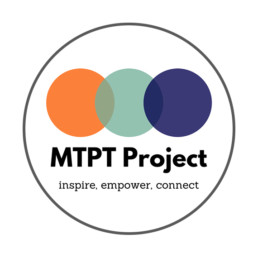
Written by The MTPT Project
The UK’s only charity for parent teachers, with a particular focus on the parental leave and return to work period.
This Autumn, we celebrate International Equal Pay Day (18th September) and the UK’s Gender Pay Gap Day (probably around the 22nd November).
“Celebrate” is probably the wrong term for it, with the United Nations telling us that “Across all regions, women are paid less than men, with the gender pay gap estimated at around 20 per cent globally.”
Out of 146 countries, the UK ranked 15th in a 2023 World Economic Forum comparison, up there with the best and trailing just behind Iceland, Namibia, New Zealand and Rwanda, amongst others.
Fifteenth out of 146 sounds great but… it’s not that great. The UK still has a gender pay gap across all industries of 14.3% meaning that women are paid (on average) 86p for every £1 that men are paid.
In the education sector, it’s even worse, with the gender pay gap standing at 18.1%. Some multi-academy trusts (we won’t name them) fare terribly, with gender pay gaps of up to 44.6%. Why not enjoy the government’s brilliant Search and Compare tool that lays the facts bare in a simple click to satiate your curiosity?
While the graphs in ASCL et al.’s updated 2023 report indicate that a slight gender pay gap exists at almost all levels (female classroom teachers actually slightly outearn male classroom teachers), a seismic shift happens between the ages of 30-39, particularly between 35-39 when – you guessed right – teachers are most likely to become mothers.
57% of female teachers aged 30-34 are mothers, jumping to 77% for women aged 35-39. During this time, the gender pay gap increases by between £846 (“other leadership”) to £2,131 (headteachers) per year. Classroom teachers – previously outearning their male counterparts by £143 per year – suddenly suffer a wage gap of £1,253.
The explanation: of course, it is the motherhood penalty in action. Studies largely agree that “women’s inability to combine work with family seems to account for the lion’s share of the pay gap” and in Missing Mothers – a report co-authored by The MTPT Project and The New Britain Project – we explain how this impact is being felt in teaching.
Motherhood means that we are losing experienced teachers in droves; they are paid less when they remain in the profession, and are underrepresented at leadership level.
Solving the gender pay gap in any industry is complicated. The same goes for what we like to term more precisely, the “fiscal motherhood penalty in education”. But the Missing Mothers report lays out one simple recommendation to government: shift the investment currently focused on recruitment, to retention.
Specifically, focus on retaining and improving working conditions for women aged 30-39 by addressing and reducing the motherhood penalty.
Want to do more this autumn to reduce the impact of the motherhood penalty in education? Book in a 30 minute call with Emma at The MTPT Project between 18th September – 22nd November. She’ll share more about why the motherhood penalty exists and the right questions to ask, and strategies to implement to make a real difference in your organisation. The fun gimmick? She’ll charge you the rate of your organisation’s pay gap for the consultation session.
KCSIE 2024: Safeguarding LGBT students
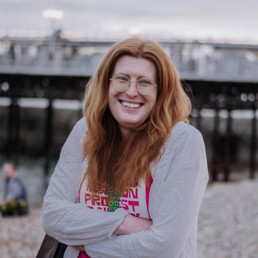
Written by Lilly Emma Thynne
Lilly Emma (she/her) is a postgraduate student at Lancaster University (2024-25). Previously, as a teacher in state and private secondary schools, she has held additional pastoral and pedagogical responsibilities as Deputy Designated Safeguarding Lead, Resident Tutor (boarding), and Lead for Technology in Teaching and Learning.
Keeping Children Safe in Education (KCSIE) has significantly changed the guidance for safeguarding LGBT+ students. These changes remain under review, pending the publication of guidance for supporting ‘gender questioning children’. To avoid confusion, these changes can be considered alongside other sections of KCSIE (statutory guidance), legislation, and non-statutory guidance.
When writing policies, clarity of language is important. KCSIE states, “All staff should be aware that terminology is a significant component in many safeguarding and wellbeing issues” [s22, p11]. For the purposes of this post:
- Transgender children are children whose gender identity does not match that assigned at birth.
- Gender-questioning children are children who are questioning whether their gender identity matches that assigned at birth.
- Trans+ refers to transgender and gender-questioning people.
- Child/children refers to anyone 17 years or younger.
- Young person refers to anyone 18 years or older.
This post identifies four changes which can be better understood by considering pre-existing legislation and guidance:
1.Removing reference to “trans” students
KCSIE removes reference to “trans” students, replacing it with “gender questioning”.
The Equality Act 2010 and Schools (2014) guidance identifies that the protected characteristic of “Gender Reassignment” applies to students [page 5]. For example, “failing to protect a transgender pupil against bullying by classmates” may make the school guilty of unlawful discrimination [page 8]. The use of the word ‘transgender’ shows the need for schools to maintain reference to pupils who are actively undergoing gender reassignment in addition to those students who are ‘gender questioning’.
KCSIE (2024) maintains the use of the phrase “transphobic bullying” [s91, p28], which refers to bullying directed at a child for either being or being perceived as trans+. The use of this phrase shows that the DfE has not completely ended the use of the word ‘transgender’.
KCSIE (2024) defines ‘safeguarding’ as, among other things, “preventing the impairment of children’s mental and physical health or development”. By removing reference to ‘transgender students’ and replacing this with exclusive reference to ‘gender questioning students’, students who are confident in their gender identity may interpret this as delegitimisation of their identity, leading to further marginalisation. Research suggests trans+ students who feel rejected by their school community are at greater risk of isolation and poor mental health due to internalised transphobia (Horton, 2023; Chodzen et al., 2019).
The Gender Recognition Act (2004) allows anyone aged 18 or older who has lived in their affirmed gender for at least 2 years with a diagnosis of gender dysphoria to change their gender legally. Any young person granted a Gender Recognition Certificate (GRC) should have their legal sex changed on school records, and a school should not disclose the student’s former gender. Reference to ‘transgender’ students may be required in a policy to explain this process.
2. Advocating caution towards social transition
KCSIE now references that the Cass review identified, “caution is necessary for children questioning their gender as there remain many unknowns about the impact of social transition” [s206, p55].
The Cass Review (2024, p.164) recommends, “A more cautious approach needs to be taken for children than adolescents”. For adolescents, the review explains, “exploration is a normal process,” and school staff should provide support to protect the student from bullying. Cass says that children who are not yet adolescents must also have their voices heard. If a child pursues social transition, professionals should ensure the child knows all options remain open and that they will be flexibly supported.
The Equality Act 2010 and Schools (2014) states, “Schools need to make sure all gender variant pupils, or the children of transgender parents, are not singled out for different and less favourable treatment from that given to other pupils” [p.17]. For example, a school may need to consider flexibility when applying a uniform policy to a trans+ student [p15].
KCSIE (2024) reminds us that “Under the Human Rights Act, it is unlawful for schools and colleges to act in a way that is incompatible with the convention” [s82, p26].
3. Removal of the requirement for a ‘safe space’
In 2023, KCSIE required schools to “provide a safe space” for LGBT students to share concerns with a trusted adult. In 2024, KCSIE removed “safe space” and replaced it with a more general requirement to “create a culture”.
KCSIE 2024 states that schools and colleges should, where needed, provide a “physical space” for students who are victims of abuse. While not all LGBT+ students are victims of abuse, a report (JustLikeUs, 2021) found that:
- LGBT+ students are twice as likely as their peers to experience child-on-child abuse.
- 1 in 5 LGBT+ students hear negative language daily about LGBT+ people.
- LGBT+ students are x3 more likely to be bullied at least once a week.
- Only 21% of LGBT+ students who were bullied told a teacher.
For this reason, an allocated safe space for LGBT+ students where they can easily find trusted adults may be instrumental in safeguarding these students.
4. Removal of reference to LGBT+ inclusion in PSHE
KCSIE has removed a paragraph reiterating the need to include LGBT content in the RSE curriculum.
Relationships and Sex Education and Health Education statutory guidance (2021) remains unchanged. When age-appropriate, schools must “ensure [LGBT] content is fully integrated” into the RSE curriculum. This content should not be stand-alone. The guidance defines LGBT as “Lesbian, Gay, Bisexual and Transgender”.
Summary
As safeguarding teams enter the new academic year and continue to support trans+ students, consideration of pre-existing legislation and guidance is important to better understand these changes to KCSIE, which remain under review.
References
Guidance and Legislation
The Equality Act 2010 and schools (2014) https://assets.publishing.service.gov.uk/media/5a7e3237ed915d74e33f0ac9/Equality_Act_Advice_Final.pdf
Gender Recognition Act (2004) https://www.legislation.gov.uk/ukpga/2004/7/contents
Relationships Education, Relationships and Sex Education (RSE) and Health Education (2021) https://assets.publishing.service.gov.uk/media/62cea352e90e071e789ea9bf/Relationships_Education_RSE_and_Health_Education.pdf
Keeping Children Safe in Education (2024) https://assets.publishing.service.gov.uk/media/66d7301b9084b18b95709f75/Keeping_children_safe_in_education_2024.pdf
The Human Rights Act (1998) https://www.legislation.gov.uk/ukpga/1998/42/contents
Research
Horton, C. (2023) Gender minority stress in education: Protecting trans children’s mental health in UK schools, https://www.tandfonline.com/doi/epdf/10.1080/26895269.2022.2081645?needAccess=true
Chodzen, G., Hidalgo, M., Chen, D., Garofalo, R. (2019) Minority Stress Factors Associated with Depression and Anxiety Among Transgender and Gender Non-Conforming Youth, https://www.jahonline.org/article/S1054-139X(18)30295-7/abstract
Cass, H. (2024) Independent review of gender identity services for children and young people https://cass.independent-review.uk/home/publications/final-report/
Just Like Us (2021) ’Growing up LGBT+’ https://www.justlikeus.org/wp-content/uploads/2021/11/Just-Like-Us-2021-report-Growing-Up-LGBT.pdf
Don’t go Short on Inclusion – Be-long

Written by Fliss Goldsmith
Fliss is an Emotional Wellbeing and Empowerment Coach and Inclusion and Belonging Consultant. Having worked for 2 decades across the Education sector as well as with individuals and corporates she has a breadth and depth of experience striving to create intentionally inclusive spaces for authentic belonging.
I was blessed to be part of DiverseEd’s July event at the Brownfield Institute in Wolverhampton. On arrival the empowering energy was palpable, and I knew immediately that everyone in attendance had a shared vision – for a kinder, safer, fairer future for education.
My part in the day was to deliver a session on Belonging and how that looks in education spaces. As an Asexual, disabled cis gender woman I have my own perspectives and wanted to share them as well as gain those of others. I remind myself often that intersectionality is at the heart of our learning.
We began with sharing our understanding of belonging – what does it mean, feel like and most importantly what is it not. The group was invested and together we found that belonging is about being able to be authentically yourself and still being seen, heard, respected and reflected in a space. The opposite, quite interestingly, of belonging is ‘fitting in’. Fitting in demands that we change who we are to match the space we are in, whereas belonging demands that we remain true to ourselves.
It sounds simple but it really isn’t. Belonging often stops before it gets going because places, people and situations are not inclusive. For too long we have lived in a white, heteronormative, cisgender, able bodied neurotypical, middle-class society with everything designed to support those characteristics. If you fall outside of these then you are faced with being ‘othered’ which immediately precludes you from belonging. As an Asexual I have not felt like I belonged since school, where it was a given that Allonormativity and Amatanormitivity were where we were all headed and if not, then there must be something fundamentally wrong with you. (spoiler alert there isn’t!)
The session held space for the experiences of those in attendance and I was humbled at the response. I heard from a non-binary attendee that they rarely felt like they belonged as they were misgendered and how language was paramount, every misuse of pronouns creating visceral pain. A black woman shared her experiences of racism and sexism within previous job roles and how that had moulded how she presented, shrank herself to not stand out. Ultimately these practices of fitting in create nothing but damage to the physical, mental and emotional wellbeing of the victim.
So how do we do it better in our educational spaces? There is hope and there are so many great Educators out there already trying to create inclusive spaces where everyone is supported in being their authentic selves.
Here are my top 10 ideas for making sure that the spaces you have control over cultivate a sense of belonging for anyone who enters them.
- Prioritize Connection – Create spaces where meaningful conversations can take place.
- Create interest groups – Ensure an accessible way for staff/students to put forward their ideas (anonymous point of entry essential.) Remember the mantra ‘nothing about us without us’ always consult someone who represents the group if they are comfortable being involved.
- Have courageous conversations – you are a role model and if you can share your struggles and challenges this immediately gives others permission to do the same.
- Be Accountable – a clear, kind apology is essential – but it means nothing without a change of actions going forwards.
- Call it in before you call it out. If someone is behaving in a way that contravenes the rules of your spaces, then call them in to see what is at the root of their poor behaviour.
- Celebrate as many ‘days’ as you can – but don’t let it stop there, yes LGBT+ History Month is February but make sure the flags are there all year long.
- Cross curricular representation – Make sure that every subject has resources that reflect different cultures, genders, sexualities, abilities etc.
- Spread the Art of Appreciation – share what you appreciate and get others to share theirs, this harnesses the brains neuroplasticity and creates positive neural pathways making people feel more connected.
- Teamwork is essential but don’t let it isolate people – use numbers not genders for teams and ensure teams are celebrated in a way they are comfortable with (does your Autistic student want to go on stage to get their prize? Maybe, you’d have to ask them- don’t assume)
- Ensure inclusive practices – visual descriptors, announcing your pronouns, inclusive language, accessibility, not making assumptions etc.
Inevitably there will be mistakes, steps sideways and ‘oh no’ moments when trying to build an inclusive space. When we know better, we must do better – so apologise and rectify and model that behaviour as a growth step.
The future needs incredible leaders to ensure we can all authentically belong. You’ve got this!
Becoming an Effective Head of Year: Specializing in Mental Health and Wellbeing

Written by Haji Prempeh
Haji Prempeh is a dedicated professional with extensive experience in secondary education, with a keen focus on children's and adolescents' mental health and wellbeing. She has a strong background in Design & Technology, having taught the subject for several years and held leadership roles across multiple schools, where she successfully led projects on pastoral care, diversity, inclusion, and safeguarding. Currently, she is pursuing an MSc in Children and Adolescents Mental Health and Wellbeing.
As educators, we wear many hats. We are not just teachers; we are mentors, counsellors, and sometimes even the primary source of support for our students. Over the years, I’ve observed the growing challenges that students face, especially regarding their mental health and wellbeing. This observation is what motivated me to create “Becoming an Effective Head of Year: Specializing in Mental Health and Wellbeing.”
Why I Created This Guide
The role of a Head of Year (HOY) is pivotal in any school setting. HOYs are often the first line of support when students encounter difficulties, whether academic, social, or personal. However, despite their importance, many HOYs are not given the specific training or resources they need to effectively address mental health issues.
After speaking with colleagues and reflecting on my own experiences, it became clear that there was a significant gap in resources tailored specifically for HOYs who are focused on supporting mental health. I wanted to fill that gap with a comprehensive guide that provides not only the theoretical knowledge but also practical tools that HOYs can use immediately in their day-to-day interactions with students.
The Importance of Focusing on Mental Health
Mental health is no longer a topic that can be side-lined or treated as an afterthought in our education system. The pressures on today’s students—from academic performance to social media—are immense, and these pressures are showing in increased rates of anxiety, depression, and other mental health issues among young people.
When mental health is compromised, it affects every aspect of a student’s life, including their academic performance, relationships, and overall happiness. Schools must be proactive in creating environments where students feel safe, supported, and able to seek help when needed. This is why the role of a Head of Year is so crucial; they are often the bridge between students and the support systems available to them.
What the Guide Offers
“Becoming an Effective Head of Year: Specializing in Mental Health and Wellbeing” is more than just a manual; it’s a toolkit designed to empower HOYs with the knowledge, skills, and resources they need to make a real difference in their students’ lives.
Understanding Mental Health: The guide starts with the basics, helping HOYs understand the different aspects of mental health and the common challenges students face.
Essential Skills: It emphasizes the core skills needed for this role, such as empathy, communication, and conflict resolution, ensuring that HOYs are prepared to handle difficult conversations and situations.
Practical Support: With ready-to-use templates, referral forms, and checklists, the guide makes it easy for HOYs to implement support strategies right away.
Professional Development: The guide also encourages continuous learning and growth, providing resources for further training and development.
Inspirational Content: I included motivational quotes and reflective exercises to keep educators inspired and focused on their mission.
The Impact I Hope to Make
By creating this guide, I hope to empower HOYs to feel more confident and capable in their roles. When HOYs are well-equipped, they can create a ripple effect throughout the school, fostering a culture of care and support that benefits not just individual students but the entire school community.
Ultimately, I believe that when we prioritise mental health in our schools, we are not only helping students succeed academically but also helping them develop the resilience and emotional intelligence they will need throughout their lives.
You can find the guide here to Becoming an Effective Head of Year – Specialising Mental Health and Wellbeing here.
Cancer helped my Autistic daughter to survive school
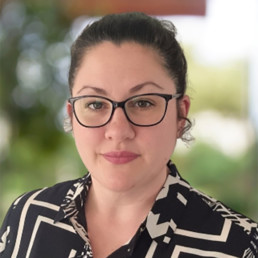
Written by Joanne Robinson
Joanne Robinson, BA, MA, PGCE, FCCT, is the Director for Training and Development at TeachUp, a company specialising in professional development for teachers in the UK and internationally. She has also led a number of teacher training programmes, including an iPGCE and an MA in Education with Pedagogy. Prior to this, she taught in secondary education for 16 years. She is keen to promote inclusive education that centres upon the wellbeing and autonomy of teachers as well as pupils.
Making the statement that cancer helped my daughter to survive school sounds quite alarming, but it is something that she and I have discussed at length over the years since this happened to her.
This blog is written with her permission. She is now 26 years old and thriving, so this did occur some time ago. However, the reason I’m writing this now is that I believe it is still resonant for school practices today.
Abigail was diagnosed with leukaemia in January 2011. She was 12 years old at the time, which is quite unusual for this type of cancer. She had just started Year 8 in the school I was also teaching at. Abi had already been diagnosed with Autism just before beginning in secondary. Since then, she has had a further diagnosis of ADHD.
Treatment for leukaemia was gruelling, with two bouts of intensive chemotherapy in the first nine months followed by two years of maintenance chemo. This was the standard protocol for girls back then, although it may have changed as cancer treatments evolve rapidly, thanks to fantastic research trials.
Children may experience some infection, but our consultant advised that life should be normal during the maintenance phase of treatment. However, because Abi was becoming a teenager and experiencing hormonal changes, we found that this wasn’t the case. In the end, she was hospitalised around ten times during her care. Some of those stays were over a month in length and at one, terrifying, point, she contracted neutropenic sepsis and was lucky to have survived.
Abi’s attendance in school was understandably low. It was a really hard two years and, in the end, she dropped back a year in order to regain some of the lost time.
School was brilliant with her. They provided her with a reduced timetable. Because she had very low immunity and her platelet levels meant she was vulnerable to bleeding from knocks and bruises, she was able to spend her breaks in the SEND inclusion room.
Before cancer, Abi was struggling in school because of the difficulties that she had due to her Autism. She found the high school environment very overwhelming to navigate. She was experiencing frequent meltdowns at home. During treatment, she was able to take school at an easier pace, spending time having respite in the SEND room and not forced to interact with other pupils at breaks unless she chose to. Suddenly, her school life was manageable for her.
After treatment ended, Abi’s needs were well-known. Chemotherapy has long-term effects on energy, so school was happy to continue with a reduced timetable and flexibility in allowing Abi breaks when she needed them. She was also in regular attendance in the SEND room. These things were there for her without her having to ask for them – self advocacy can be hard for any child, let alone those with communication difficulties (many time-out systems put the onus on the student to instigate them, which means they are never used).
By the time Abi reached her GCSEs, she did astonishingly well. She was then able to use a similar approach to her time in the school’s Sixth Form.
Abi has since said to me that the accommodations that school made for her cancer were what made it possible for her to complete her studies as a neurodivergent student. In my own teaching experience, I had witnessed many neurodivergent children being unable to cope by the time they reached GCSE: the sheer energy it took to mask every day through this stressful time, repressing behaviours that might be seen as strange by others, would result in them refusing to attend.
There is a lesson here. We have to adapt school practice to accommodate the fluctuating energy levels that occur with neurodivergence. These pupils are often academically capable and should be attaining great outcomes, taking those first steps into fulfilling adult lives. Instead, they are burning out in their teens. Simple changes can adjust the classroom to make it more accessible, and enabling respite or shorter days could be the difference between a neurodivergent child completing school or not.
It should not take a serious illness to ensure proper accommodations are made: neurodivergence is a disability that needs reasonable adjustment from the outset. I think the tide is turning and there is great work being done to raise awareness, but we have a way to go before we can claim with certainty that education is equitable for neurodivergent students.

